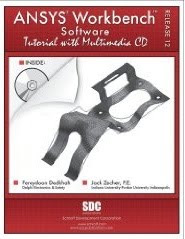This is perhaps the most asked and important, yet dreaded, question in CFD analysis. Some people will say “yes, the residuals were XXXX” just to dismiss the question. But is the answer that simple? Unfortunately it is not. That is just one measure we should use in determining whether a solution is converged. The definition of convergence is, in a mathematical sense, the approach towards a definite point. Basically we are trying to get our numerical solution sufficiently close (accurate) to a definite point (exact solution). To help understand what convergence is in practice, we must step back and look at what we are trying to accomplish in modeling.
Overview
The goal of CFD modeling is to obtain virtual flow field which represents the physical situation. In traditional CFD modeling, the first step in this process is to create a grid that represents the physical domain. Once the mesh has been created, the boundary conditions and other physics models are applied to complete the computational model. The computational model is then solved. As analysts we must think of the convergence ramifications when executing both the meshing and solving steps.
Meshing Convergence
Typically when people speak of meshing in regards to convergence they are considering refining the mesh in certain areas to reduce the residuals in this area. This is a technique that is commonly used, but is not what we will be discussing here.
However when you consider what we are representing the continuous flow field by using discrete approximations, we must ensure that our grid is sufficient fine—that it approximates, to sufficient accuracy, the physical flow field. Typically this is done by investigating successively finer and finer meshes to show that the solution converges to a fixed limit. Many people refer to this as “grid independence,” but in reality is it is convergence of the discrete computational model to the continuous physical system.
Solver Convergence
When monitoring a solver run, people generally just examine the residuals. Residuals are a measure of change of the solution between iterations at it tends towards the discretitized solution. Different solvers specify different levels at which the residuals must meet to be a “converged” solution. However these are just a general rule-of-thumb. In general the residuals can reduce to a certain level but the flow field may not have reached an iteration independent solution. Conversely the residuals could converge to a level higher than the specified tolerance yet could reach a fixed solution for the quantities of interest (although it we would still have to check the mesh convergence of this solution). Because of this it is typically recommended to monitor several relevant quantities during the solution phase to make sure these converge in addition to the residuals.
Of course the question that naturally arises is: What are the variables we should monitor? This is where our years of schooling and experience come into play. In general we want to monitor variables that are relevant for the problem we are solving. For instance for many problems we are concerned with the pressure drop through the domain so we should monitor this quantity as the solution progresses. If we were investigating the flow over an airplane it would be useful to monitor the lift and drag. If we were to model a heat exchanger, it would be useful to monitor the temperatures leaving the domain and the heat flux through the various surfaces. So there is no single monitor that that is sufficient to determine convergence for all problems. We must use our engineering judgment to determine the most useful quantities to monitor.
Summary
In summary, answering whether a solution is a converged solution is a complex answer. It is a question that, as a modeler, we must always have in the back of our mind. When we are developing a concept for the model in our mind we should be thinking about the variables we should monitor. When developing a mesh we should be thinking about developing another to test mesh convergence (grid independence). When crunching the numbers, we want to monitor both the residuals and the monitor points we have created. When the first results are displayed, we should be looking for unphysical discontinuities or other phenomena that would indicate poor convergence.
This discussion is not meant to be an end-all be-all in regards to convergence. In fact entire books have been written about the subject, so I will not claim to have described in completely in this blog. I just wanted to present some questions that we, as modelers, should always be considering when developing and solving our models. We should understand the true nature of convergence, feel confident when asked whether our solution has converged, not simply rattle off the scripted response that the residuals were below some arbitrary value!














